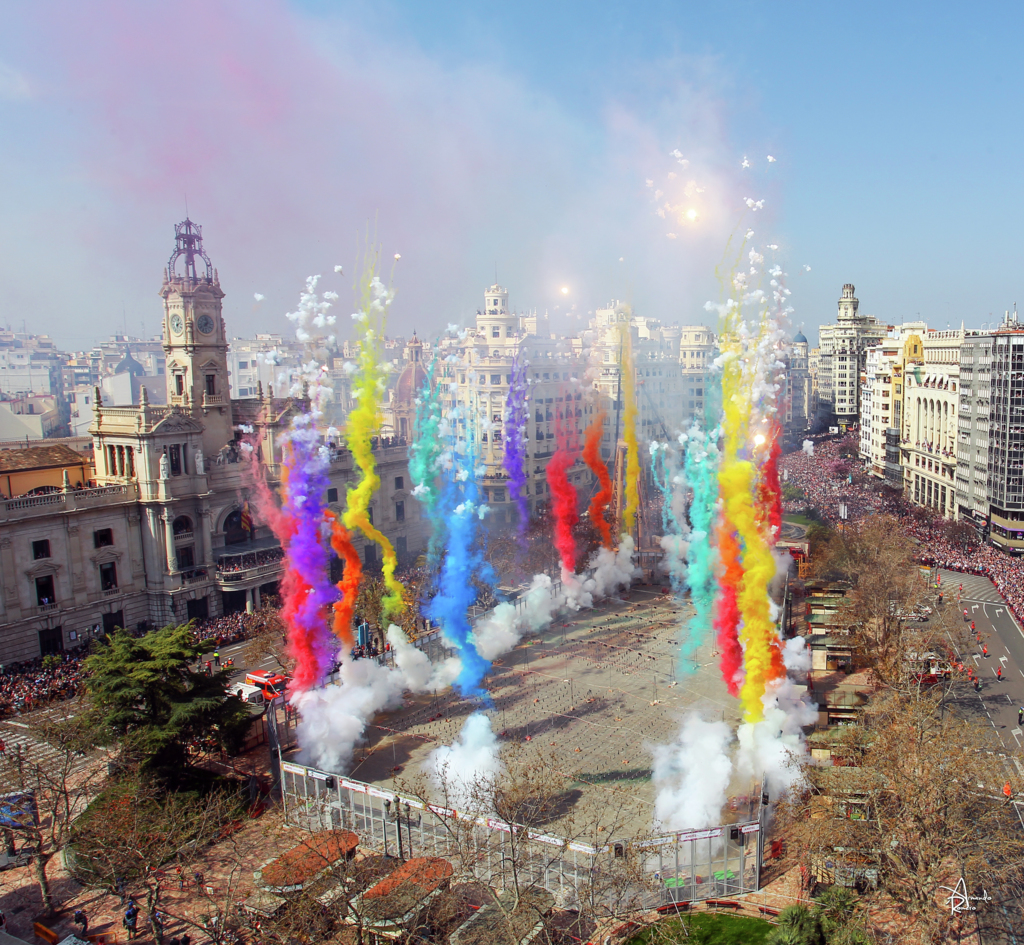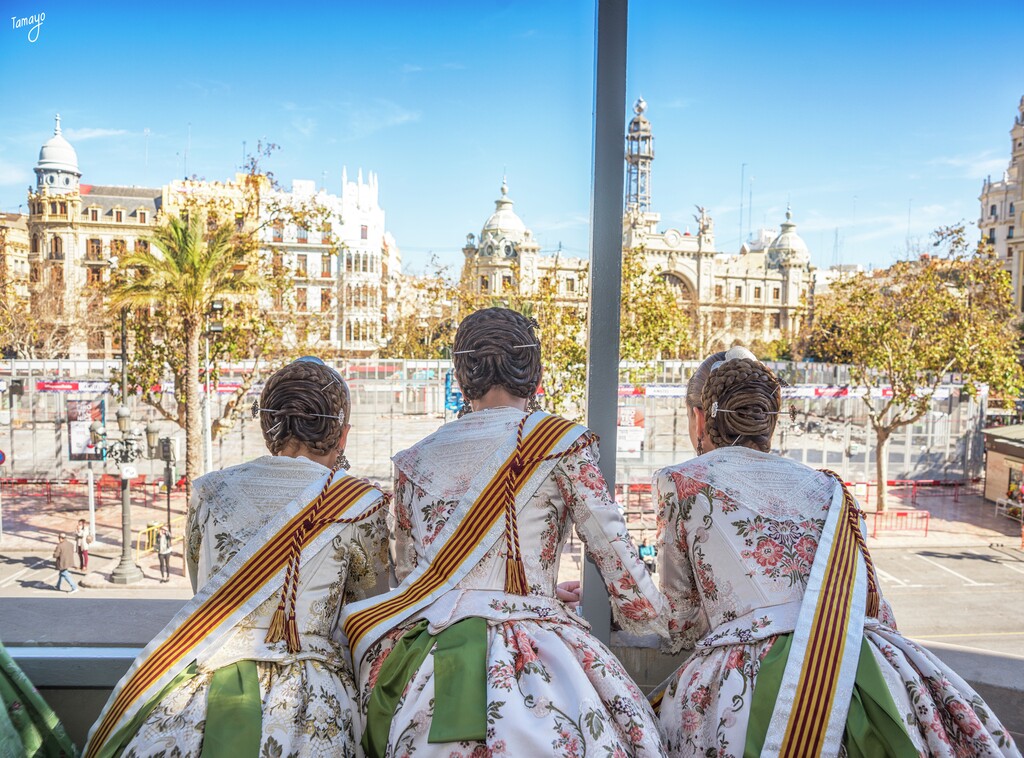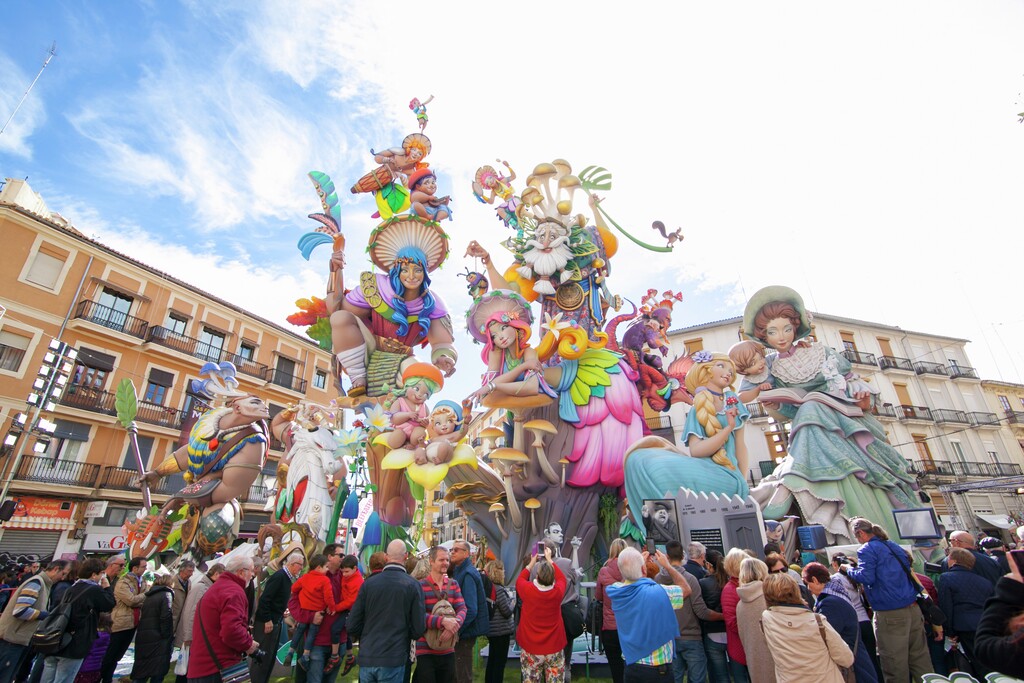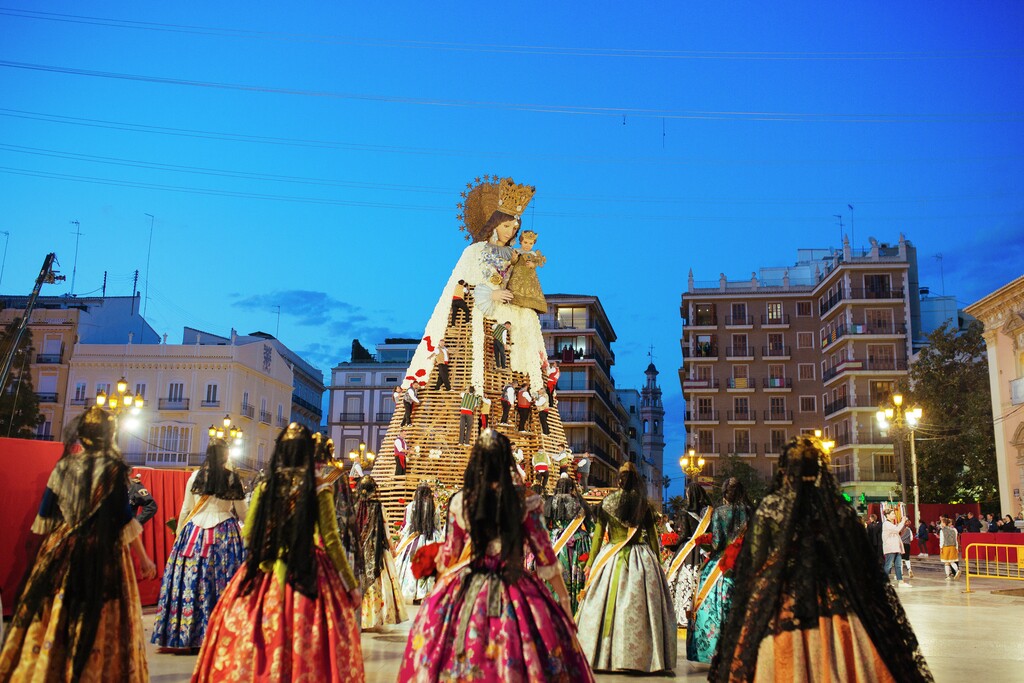



The magic of the València Fallas is back
| 25.02.2022 | 14:13
The great Valencian festival, which has been on the Representative List of the Intangible Cultural Heritage of Humanity since 2016, returns to its usual calendar with all its splendour and usual events, such as the mascletaes, the floral offering, open-air dances and fireworks displays
On the last Sunday of February, the fuse of the Fallas is lit. That day, during the act of the ‘Crida’, is when the falleras mayores of the city call all the falleros, citizens and visitors to enjoy the great festival of València. Las Fallas were declared a World Intangible Cultural Heritage Site by UNESCO in 2016. After two years without being held in March, they return to the spring calendar with all the traditional events, the mascletaes, the firework displays, the floral offering, the open-air dances and around 800 monuments that fill the streets of the city with art, humour, and satire. The festival is in the streets and during the big days, from the 15th to the 19th of March, it reaches every corner of the city. Are you up for it?
The origins of València's most international festival
To discover the beginnings of this festival, you must go back hundreds of years. Every 19th of March, coinciding with the celebration of Saint Joseph, the patron saint of carpenters, the city's carpenters used to take old scraps of leftover wood out of their workshops to burn them. This marked the end of winter and welcomed spring, bringing an end to the old and ushering in a new time.
The festival has changed a great deal over the years, but without losing its essence and all its traditions. These bonfires come from the burning of the fallas, monuments that are ‘planted’ every 15th March around the city and the province of Valencia. Some of them are large and represent everyday scenes, a social and comic satire that is still with us today. But there are also smaller monuments, made for the little ones, which invite you to dream and move into a fairy tale in the form of a falla. They are authentic works of art created by the guild of fallero artists, who are accompanied by others such as musicians, pyrotechnicians, costume designers and florists. All of them are true artisans and part of the soul of the festival.
Fallas 2022, livelier than ever
The Fallas have also suffered the effects of the pandemic. After a year in which they had to be cancelled and another with a minimum programme in September to burn the monuments, València’s great festival rises from the ashes, as it does every year, to shine again in the streets of the city and this year it does so with more impetus and joy than ever.
This year some Covid safety measures will be kept in place. The use of masks will be compulsory in all indoor activities and in open-air events where safe social distancing cannot be guaranteed. Check out the full programme here.
Gunpowder, music, and lots of art
One of the most spectacular events of the Fallas is the 'mascletà', which returns to the Plaza del Ayuntamiento, the square where the Town Hall is located, to thrill the crowds every day at 2pm with a roar of gunpowder and its characteristic smell, from the 27th of February until the 19th of March. Thrill-seekers should not miss the fireworks displays, which are set off every night in the Turia Garden.
With the ‘plantá’ on the nights of 15th and 16th of March, the monuments are placed in the streets. A total of 800 works of art spread over 400 locations around the city. The fallas are classified into different categories, according to their complexity, size, and originality. They are all unique, but the most spectacular ones are concentrated in the old town, Ciutat Vella, and the Ruzafa and Gran Vía neighbourhoods. The best thing to do is to book a guided visit or a Fallas tour to see the most spectacular monuments, while they tell you all about the details and traditions.
The festive calendar continues with the prize-giving ceremony for the monuments, which takes place on the 16th and 17th when the Fallas commissions collect their prizes in the Town Hall, accompanied by their bands. The streets of València are also filled with music and colour these days.
And then we come to the most exciting event, the floral offering that takes place every 17th and 18th of March to the Virgen de los Desamparados (Our Lady of the Forsaken), the patron saint of València. The falleros dress up in all their finery, the most traditional costumes, and walk through the streets of València carrying bouquets to the beat of the music of local bands. The procession ends in the Plaza de la Virgen, where a giant image of the Patron Saint is set up and her mantle is covered with flowers.
The ‘Cremà’, the end and the beginning of the fiesta
With the 'Cremà' comes the final act of the Fallas, on the 19th of March, a special event in which the monuments succumb to the flames. It is staggered, starting at 8pm with the small fallas, and at 11pm with the big ones. A little later the winners of the first prizes in both categories and those of the Town Hall. With the ‘cremà’, the flames accompanied by fireworks, take away the remains of the Fallas of the present year and begin those of 2023, in an exercise of renewal that is truly magical. It is a spectacle that should be experienced at least once in a lifetime.
Find all Fallas information at visitvalencia.com
Download the best photos of the party here.
